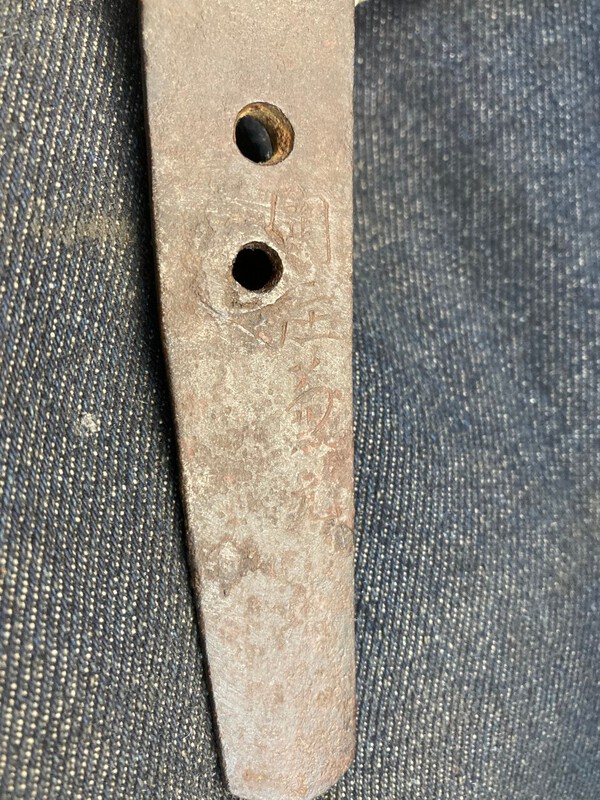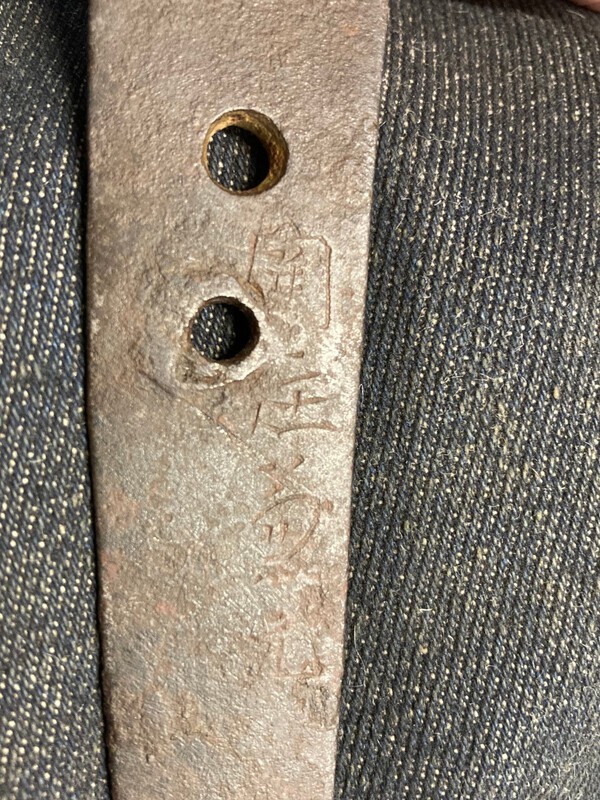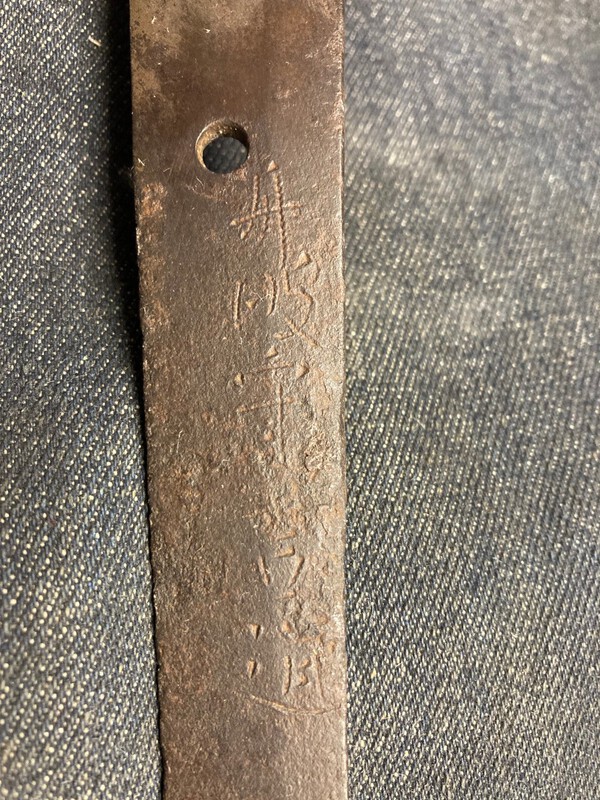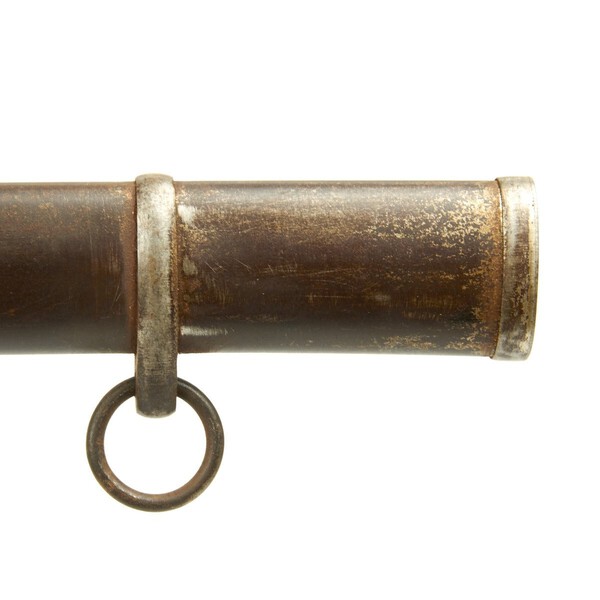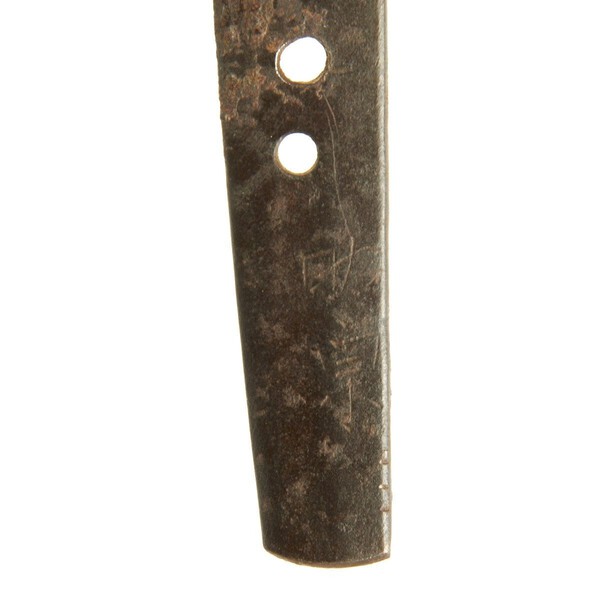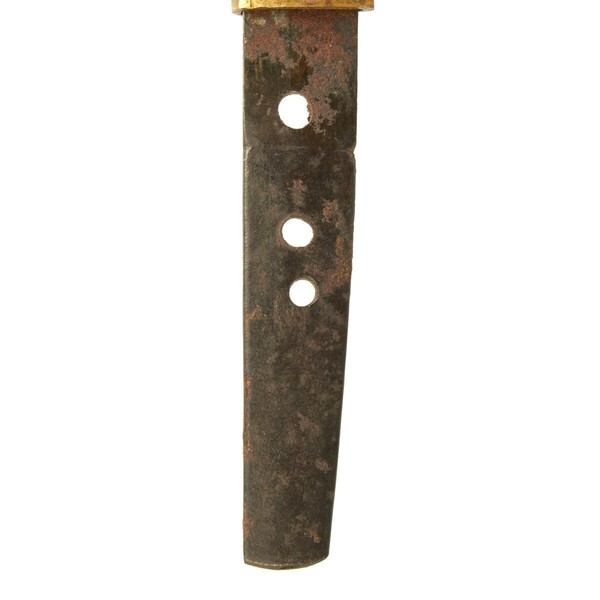
tbonesullivan
Members-
Posts
391 -
Joined
-
Last visited
Content Type
Profiles
Forums
Events
Store
Downloads
Gallery
Everything posted by tbonesullivan
-
Confirmation on Worn Wakizashi Mei
tbonesullivan replied to tbonesullivan's topic in Translation Assistance
Close examination shows that there strokes on either side of the lower vertical stroke, so TOMO is out. Best guess has got to be HIDEMUNE. -
Any idea what he did to get those rubbings of the tang? I'm about to start TRYING to learn to get rubbings to see if maybe the paper can find things my eyes cannot.
-
Help with Ko-Wakizashi by Kanemitsu Mei
tbonesullivan replied to tbonesullivan's topic in Translation Assistance
UGH.. I was in a rush can't type. IT's MOTO as Ray said. I can clearly see the two parallel lines. I have however been using a stiff plastic brush to help get stuff out of the MEI on another tang. It definitely has brought out some stuff I could not see before. -
Help with Ko-Wakizashi by Kanemitsu Mei
tbonesullivan replied to tbonesullivan's topic in Translation Assistance
This one looks somewhat similar but looks less old. That way of writing SEKI threw me off. I also keep forgetting that Swords have been forged at SEKI for 800 years, long before there was "Seki Arsenal". https://www.nipponto.co.jp/swords4/WK328104.htm -
Help with Ko-Wakizashi by Kanemitsu Mei
tbonesullivan replied to tbonesullivan's topic in Translation Assistance
I would agree now, I got a better picture... some how. And the last character is definitely TOMO and not MITSU. Also got a picture of the overall sword and the reverse of the tang. -
Help with Ko-Wakizashi by Kanemitsu Mei
tbonesullivan replied to tbonesullivan's topic in Translation Assistance
Almost all of what I have dealt with are 20th Century Gendaito and Showato, which usually don't have that patination from long term slow oxidation around the signature. It looks more like the Edo period blades I have handled. I am however no expert by any means. I'm just now looking into how to do signature rubbings to maybe help reading ones like this easier. -
Help with Ko-Wakizashi by Kanemitsu Mei
tbonesullivan replied to tbonesullivan's topic in Translation Assistance
Thanks! Definitely not a writing of SEKI I am used to, but I've rarely seen two written the same way. It definitely has a lot of patination on the tang for being so young, relatively. -
This proved to be difficult to get a good picture of the Mei unfortunately. It looks to read 住 兼 光 - JU KANE MITSU. The first character however is one I have never seen before. The last character I am pretty sure on "mitsu", with the lower right "leg" curving around quite a bit. It also came with a wooden tag with a lot of writing on it, but I do not know if it is just a capture tag, or whether it has information regarding the maker. The blade shape is HIRA-ZUKURI. Any help is definitely appreciated!
-
Confirmation on Worn Wakizashi Mei
tbonesullivan replied to tbonesullivan's topic in Translation Assistance
Yes, that's the same problem I have having. 早 really does look to be the second character, which doesn't make any sense. It's fairly clear, and the HIDE above it is definitely clear. It doesn't show any of the usual signs of being a fake signature, and the blade is definitely a true nihonto, with a Hamon, Hada, various Kizu, and so forth. I'm stuck. -
I've been looking at this one for a while, and I tried to get the best photograph that I could have the mei. The first character is definitely 秀 HIDE, but for the second character the best I could come up with is 宗 MUNE. Or maybe 景 KAGE? I'm about to start looking at Kanji normally not used on tangs.
-
Oh nice! It's always fun when you pull something like that out of Shin-gunto Mounts. Even better if it's still in good polish.
-
Help with Somewhat Rusty Wakizashi Mei
tbonesullivan replied to tbonesullivan's topic in Translation Assistance
Oh wow. Definitely missed that. It's a shame that the blade is all stained like it is. -
Is there anything on the other side of the tang?
-
This mei has a bit of rust, so I'm having trouble with the second character of the name, as well as what I assumed was a province name. However it looks to begin with 州 SHU, instead of ending with it. It doesn't look like there is a character above it that is missing. Also, the blade itself looks like it has glue or possibly dried tree sap on it, which has defied any attempts at removal. It looks like oxidation may have started under it and bonded to it. I'm fairly certain the mei ends with 守 ? 造 - MORI ? TSUKURU, but I can't tell what the middle character is. Maybe 吉 YOSHI or 治 HARU? It came with a round Tsuba, which is signed 國 廣 - KUNIHIRO as far as I can tell. I don't know if there is any resource regarding makers of Koshirae. As always, any help is very much appreciated!
-
From what "we were told" the Mum was probably added around the time it was converted to a Kyu-Gunto. It's a Wakizashi length blade, and they often had shorter handles, and we think the tang was made longer, something that we have seen before. It was definitely an interesting piece. I think the cutting edge was only around 20 inches long. I wish I still had access to it, but it is long gone unfortunately.
-
This is a sword I kinda forgot about after looking at it back in 2017, before I started trying to read Kanji. It's a Wakizashi that was put into Russo-Japanese style mounts. The tang definitely looks quite old, and it's marked with a Mum. The blade unfortunately was somewhat damaged, with some nicks in the edge. The hamon was hard to see, but definitely SUGUHA. The Mei is a bit faint, but I can see that the second character is 宗 - MUNE, but I can't make out the first character. I thought maybe 光 MITSU, but that doesn't look right. It looks to be a very simple kanji, but the tang is worn, so maybe some is missing. Any help would be greatly appreciated!
-
NICE! Those "chippy" wedge signatures are always hit or miss when I try to read them.
-
So this really falls under my "I have no idea" file. It's a from a Civilian Employee of the Army type Katana, and the Mei is quite faint, or possibly incomplete. The only character I have any confidence on is 正 MASA. There is writing on both sides, but the other side doesn't really look to be a Nengo, though it does have a circle, which I recall is sometimes used as the character for year.
-
Found an inscription, are these initials, or?
tbonesullivan replied to vitamin's topic in General Nihonto Related Discussion
Definitely an interesting discussion. I have also always heard "DO NOT TOUCH THE TANG". My question is, what to do about "active red rust"? This type of rust tends to progress. Most of my experience with corrosion is with Cars and Antique European swords, and generally if it's active red rust you want to either get it off or treat it with something that converts it into a more stable form of oxide. I'm definitely not advocating that type of treatment for Japanese sword tangs, but with the years long wait list for Togishi currently, what can be done to stop the rust from progressing? With antique swords that have a bit of surface rust, we usually just apply some WD-40 and let it sit for a while, which causes the rust to turn black, and it doesn't seem to progress after that point. However that's definitely NOT something suitable for Nihonto. -
Mei Translation Type 3 Gunto
tbonesullivan replied to MacTheWhopper's topic in Translation Assistance
For the large scale production during WWII, would the smiths always be the ones signing the blades? Or would they have an apprentice or someone else add the Mei and nengo? -
Source for Quality Uchiko Ball + Powder
tbonesullivan replied to tbonesullivan's topic in General Nihonto Related Discussion
I remember reading some guides that said to oil the blade, and then use the Uchiko to spread powder, followed by wiping off the blade. My first thought was "that will just make a mess". You end up with oil on the ball, which ruins it's effectiveness, and you end up with a mess on the blade too. I remember seeing pictures of a blade with marks where an oily uchiko ball had been used, as the powder was stuck on the outside. -
Source for Quality Uchiko Ball + Powder
tbonesullivan replied to tbonesullivan's topic in General Nihonto Related Discussion
Do you have any suggestions? I also play various brass instruments, so I have an extensive collection of various viscosities of synthetic and mineral oils. I've also got some Renaissance Wax, if I wanted to put any on display.

